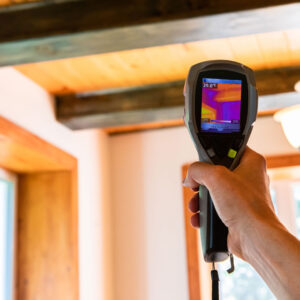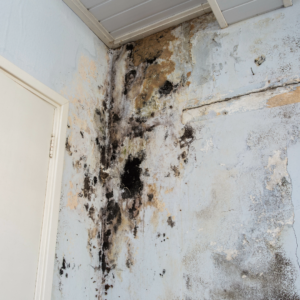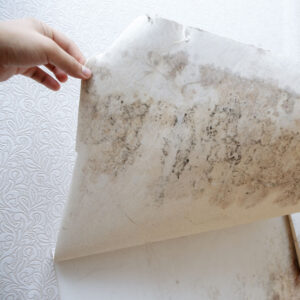The Importance of Mold Assessments for a Healthy Home
Mold is a type of fungus that can grow quickly in damp, warm environments, and it can have a significant impact on your health. It can cause respiratory problems, trigger allergies, and worsen conditions like asthma.
Mold growth can pose a significant health risk to individuals exposed to it and cause structural damage to buildings. A thorough mold assessment is recommended for identifying and preventing mold growth. This involves inspecting the property and using specialized equipment to detect moisture levels, temperature, and humidity, as well as measuring air quality to identify the presence of mold spores.
Preventing mold growth is the ultimate goal of mold assessment. By identifying the causes of moisture in the property, the assessor can provide recommendations on how to address them, thus preventing mold growth. Additionally, the assessment provides a baseline for future inspections, ensuring that the property remains mold-free. It is important to note that mold growth can occur in any property, regardless of age or design, making mold assessment necessary for all property owners.
Different types of assessments, such as visual inspection, air sampling, and surface sampling, can be conducted as part of a comprehensive evaluation.
What is a Mold Assessment?
 A mold assessment identifies and evaluates the presence of mold in a building or structure. The process involves visually inspecting the premises, air sampling, and surface sampling to determine the extent of mold growth. Based on the assessment results, a pro recommends a remediation plan to rectify the problem.
A mold assessment identifies and evaluates the presence of mold in a building or structure. The process involves visually inspecting the premises, air sampling, and surface sampling to determine the extent of mold growth. Based on the assessment results, a pro recommends a remediation plan to rectify the problem.
Types of Assessments
It’s important to conduct mold assessments to ensure the safety and cleanliness of an environment. These assessments come in different types, including visual inspection, air sampling, and surface sampling.
Visual inspection entails examining a space to identify possible contamination, often used in combination with air and surface sampling for more detailed information.
Air sampling collects air samples from different locations to analyze them for potential airborne health hazards, such as mold spores, bacteria, or viruses.
Surface sampling involves testing swabbed or wiped surfaces for contaminants to identify areas that require additional cleaning or disinfection. An assessor can obtain a comprehensive picture of the safety and cleanliness of a given environment by utilizing a combination of these assessments.
Hire a Pro!
 Mold growth in homes can pose a severe threat that homeowners should be aware of. It can cause health issues and damage to the property. Therefore, hiring a professional for mold assessment is essential instead of attempting to handle the problem alone. A mold assessor possesses the expertise and equipment to accurately detect mold growth, identify the type of mold, and determine the extent of the damage.
Mold growth in homes can pose a severe threat that homeowners should be aware of. It can cause health issues and damage to the property. Therefore, hiring a professional for mold assessment is essential instead of attempting to handle the problem alone. A mold assessor possesses the expertise and equipment to accurately detect mold growth, identify the type of mold, and determine the extent of the damage.
One of the primary reasons for hiring a professional for mold assessment is to ensure safety.
Mold growth can be hazardous. If not handled properly, it can spread and cause further damage. A skilled assessor knows how to take necessary precautions to prevent the spread of mold spores and ensure that the affected areas are safe for the residents. Additionally, assessors are trained to use protective equipment and tools to avoid exposure to mold and other harmful substances.
Why Mold Assessments are Important
Mold exposure can have severe health consequences, particularly for those with respiratory issues or weakened immune systems.
Symptoms of mold exposure include coughing, wheezing, difficulty breathing, and irritation of the eyes, nose, and throat.
Prolonged mold exposure can lead to further health complications, such as lung infections and neurological problems. To prevent exposure, promptly address mold growth in your home or workplace and take necessary precautions. This may require hiring an environmental consulting company and implementing measures to prevent future mold growth. You can expect a thorough evaluation of the affected area during the assessment.
The presence of mold indoors can have a significant impact on the quality of the air. It can release spores and other particles into the air, triggering allergies and respiratory problems. If not appropriately addressed, these spores can settle on surfaces and continue to grow and spread. Mold creates a musty odor that can be unpleasant and difficult to eliminate.
If left unchecked, mold can cause significant harm to both personal belongings and property. It thrives in warm, moist environments and can spread rapidly. Wooden frames, drywall, and other materials can be eaten away by mold, weakening the structure of a building. It can also ruin carpets, furniture, and clothing.
When to Get a Mold Assessment
 Prevention is always better than cure when it comes to mold. If you notice a persistent, unpleasant smell in your home or workplace, it’s time to investigate further. A mold assessment can help identify any hidden growth and prevent it from spreading further. Mold spores can cause respiratory problems, so address the issue as soon as possible.
Prevention is always better than cure when it comes to mold. If you notice a persistent, unpleasant smell in your home or workplace, it’s time to investigate further. A mold assessment can help identify any hidden growth and prevent it from spreading further. Mold spores can cause respiratory problems, so address the issue as soon as possible.
Think about getting a mold inspection in these particular situations:
Before you buy a new house
It’s important to note that mold inspections are typically not included in a standard home inspection. Although a home inspector may be certified to assess mold, environmental testing may be outside their checklist.
When considering purchasing a new home, we highly recommend hiring a professional mold assessor who is well-versed in current guidelines and equipped with modern tools and techniques. This is especially important as mold spores can emit allergens that may harm those with weakened immune systems.
While environmental testing may cause a delay in the home-buying process, it provides long-term peace of mind. Additionally, it’s advisable to have a mold test conducted before finalizing the purchase of a home, particularly for older homes where hidden mold in the attic may be a concern. Poor bathroom ventilation can often lead to mold growth in the attic, which may only sometimes be visually detectable with a proper assessment. Look out for signs of previous water damage or clean-up jobs as indicators of potential mold growth.
Before you sell your house
Have your home tested for mold before putting your house on the market. Suspicious staining or mold growth could delay the sale even in less noticeable areas.
To avoid any issues, Mark Newman, a certified mold assessor with decades of experience, advises sellers to have a mold inspection before selling their home. He has seen many home sales held up due to prior flooding issues, plumbing leaks, and suspicious staining. Newman emphasizes that “staining does not necessarily mean an ongoing problem, but the only way to be sure is to get conclusive test results.”
Newman explains that stains leave a “mold footprint,” meaning there is evidence that mold has been cleaned up but not eliminated. Therefore, a mold test is necessary to confirm the presence of an ongoing problem.
If a home has been vacant
If you plan to buy a vacant house or building, we advise you to get a mold inspection beforehand. When people leave a place unoccupied for a long time, they usually close windows and turn off air conditioning units, which can result in minimal airflow in the ductwork and unmonitored humidity that leads to moisture problems. Buttoning up a house makes vacant homes vulnerable to mold growth.
Foreclosures or vacation homes are particularly susceptible to this due to limited airflow, which can quickly elevate relative humidity and contribute to the growth of thousands of species of mold.
Dry molds can develop on surfaces when the relative humidity is over 65%. For example, you might see dry mold growth on a bathroom ceiling.
Wet molds are more dangerous to human health and grow as quickly as dry molds. They can be found in basements, behind drywall or insulation, under sinks, or in chronically wet places.
If water damage is evident
You should have a mold test if there is evidence of a water event in a home. Some clues are water stains at the bottom of doors or in the wall cavity. Sometimes, a more obvious sign of a water event is when part of a wall is cut away or replaced.
Water damage requires immediate attention. Depending on the type of mold spores and how wet the conditions are from water, black mold could grow within a week. Toxic black mold can appear slimy from moist conditions or dry and powdery if its water source is dried.
Other types of mold only need 48 hours to grow and spread. Even a tiny leak can lead to big problems.
If mold is visibly present
Mold is easily identified when it appears on visible surfaces. It usually presents in shades of black, green, or blue, especially the toxic variety. Although not everyone who comes into contact with mold or mildew is in immediate danger, it is important to prevent it from spreading.
Mildew is a type of mold, so allowing it to grow could eventually have an impact on your health. The significant difference between mildew and mold is that mildew does not necessarily produce mycotoxins, which can be toxic. To ensure that potential toxins are identified, AMD Environmental’s certified mold assessors will visually inspect indoor air quality.
If someone in the home has an unexplained sickness
Individuals with asthma, both children and adults, are at a higher risk of lung infections due to mold inhalation. Even healthy individuals may experience runny noses, skin rashes, watery eyes, wheezing, headaches, or difficulty breathing.
Those with asthma or sensitivity to environmental allergens may experience symptoms immediately, including runny noses, watery eyes, and asthma flare-ups.
According to the Centers for Disease Control and Prevention (CDC), the Institute of Medicine (IOM) discovered in 2004 that there is adequate evidence linking indoor mold exposure to various symptoms, including upper respiratory tract symptoms, coughing, wheezing in healthy individuals, asthma symptoms in those with asthma, and hypersensitivity pneumonitis in those who are susceptible to that immune-mediated condition. Since mold spores are not visible to the naked eye until they grow, they can experience symptoms without realizing the source.
Before buying or renting a new property
After a water damage incident, moisture can create the perfect environment for mold to thrive. Even if you’ve dried everything out, mold can still grow behind walls and under floors. Getting a mold assessment before moving in is a good idea if you’re looking to buy or rent a new property. This can help you ensure the property is free from mold and moisture-related issues.
What to Expect During a Mold Assessment
 Assessing mold is a thorough process that involves inspecting buildings, homes, and other structures to determine the presence of mold. The process typically includes a visual inspection, collecting air and surface samples, and laboratory analysis. The assessment’s duration can vary depending on the structure’s size, the extent of mold growth, and the inspection’s complexity. Generally, a mold assessment can take several hours to several days to complete.
Assessing mold is a thorough process that involves inspecting buildings, homes, and other structures to determine the presence of mold. The process typically includes a visual inspection, collecting air and surface samples, and laboratory analysis. The assessment’s duration can vary depending on the structure’s size, the extent of mold growth, and the inspection’s complexity. Generally, a mold assessment can take several hours to several days to complete.
Once the assessment is complete, the results are presented in a detailed report that outlines the findings and recommendations. The information will identify the mold species present, the extent of the growth, and the potential health risks associated with exposure. Additionally, the report may include recommendations for remediation and prevention of future mold growth. It’s essential to understand the report’s significance as it can impact the health and safety of the occupants.
How to Prevent Mold Growth
To prevent mold growth, keeping your space clean and dry is important. Prevention practices include regularly disinfecting surfaces, fixing leaks or water damage immediately, and maintaining low humidity. Proper ventilation is also key, as mold thrives in areas with poor air circulation.
To prevent mold growth in your home, follow these ten tips:
- Control humidity levels by using a dehumidifier or air conditioner.
- Quickly address any leaks or water damage.
- Install exhaust fans in bathrooms and kitchens to reduce moisture.
- Ensure your home has proper ventilation.
- Avoid using carpet in moist areas like bathrooms and basements.
- Dry any wet areas within 24-48 hours.
- Use mold-resistant products in moisture-prone areas like bathrooms and kitchens.
- Keep gutters free of debris to prevent water seepage.
- Limit indoor plants as the soil can harbor mold growth.
- Inspect for mold signs like a musty smell or visible growth, and immediately act if found.
Maintain proper ventilation and humidity levels to promote a healthy and comfortable indoor environment. Inadequate ventilation can cause the air inside to become stagnant and contaminated with pollutants, including dust, allergens, and harmful chemicals.
High humidity levels can also lead to the growth of mold, mildew, and other harmful microorganisms that can negatively impact our health. Ensuring the safety and well-being of your family is of utmost importance, including your home’s health. Scheduling a mold assessment is a crucial step in identifying and addressing any potential mold issues that may be present.
If you suspect that your home or building may have a mold problem, take action immediately to protect the health and safety of those who use the structure. Remember, prevention is the best defense against mold growth, so take proactive steps to minimize the risk of mold growth in the future.

